Tuya Danika: described, growing and caring for an ornamental shrub
This dwarf ball-shaped shrub is the world's favorite among gardeners among all types of thuja. Her father is considered to be a certain Dane Jensen (for Denmark, this is the same as Ivanov for us), who received this thuja in 1948 as a result of experiments with seeds.
Content:
- Description of the plant
- Tuya Danica: care and landing
- Thuja Danica pests
- Useful properties and application
Description of the plant
This type of thuja is great for any personal plot, regardless of its size and costs (both temporary and financial) for its care.
The components of its popularity can be considered:
- Density and consistency of the crown.
- The correct vertical arrangement of the needles.
- The color saturation of the needles throughout the year.
- Compactness.
In scientific terminology, this plant is called Thuja occidentalis Danica, that is, it is a variety of western thuja... It is an evergreen and slow-growing coniferous tree from the cypress family. The plant, as mentioned above, is very compact - its height in centimeters is up to 80, and the diameter of the crown is up to a meter. At the same time, the tree grows every year by 5 centimeters in height, adding 4 centimeters in width and by 10 years has a 40-centimeter crown (in diameter).
Its crown is in the form of dense needles, whose rows are arranged vertically and parallel, and in their decorative mass they form a ball.
The needles themselves are flat and scaly, the color is dark green, and bright and shiny. The size of the plant also determines the length of the shoots - they are short and in the form of dense branches of a light green color are also arranged vertically. This thuja fruit has in the form of round brown cones with a diameter of up to 12 millimeters.
Tuya Danica: care and landing
The plant is not demanding on natural conditions:
- In terms of light, both direct sun and partial shade are suitable, but the first option, as always, is preferable (a gain in decorativeness - the needles are denser and brighter in color).
- On the soil - any non-depleted fertile, with moisture and indifferent - alkaline or acidic will do.
Gardeners recommend planting this thuja purchased seedlings, which are usually sold in a container protected from deformation and fertilized with soil, because:
- First, they are already acclimatized to regional conditions.
- Secondly, they will almost certainly take root, since the roots will not undergo any "shocks", which cannot be avoided when digging.
- Thirdly, in the first year of their no need to fertilize anymore.
- And finally, fourthly, you can plant a seedling at any time of the season (March-November).
Danica has a superficial root system based on a number of deep roots.
The bark of the tree has a "brick" color and exfoliation in the form of narrow strips. The plant is not afraid of temperature extremes (including frosts in the spring), or air pollution.
Thuja Danica pests
The pests of this thuja are standard for its species - thuja aphids and a false shield.
Since they live, as a rule, only during the year (from winter to winter), they require regular preventive measures - treatment with standard plant protection products (fungicides, insecticides).Well, if this did not help and the thuja was attacked by some specific pest, then "point" methods of dealing with it are already used.
This plant is hardy and excellent for our climate.
Therefore, the recommendations for this time are as follows:
- When the sun drowns the snow during the day, and during the night it turns into ice, the snow should be shaken off the tree, since the resulting kind of "lens" refracting the sun's rays can burn the inner part of the tree.
- If the ice has already formed, it should be contaminated with peat or earth (the ice will melt without damaging the plant).
Useful properties and application
Danica, like all western thujas, has a remarkable quality - high phytoncidity, i.e. it is capable of producing biologically active substances in a volatile form, which naturally:
- They kill the simplest organisms, fungi, microscopic forms and bacteria, as well as small insects.
- Not only plants increase immunity, but people who inhale them.
Danica is just a hit in terms of its application possibilities:
- With equal success, it can be planted singly, form groups and even a rock garden.
- The natural shape in the form of a ball does not require a haircut.
- Ideal as a low (up to a meter) hedge.
- Widely used for decoration of the borders of paths in the garden.
- Suitable for all plots of land, regardless of type and size.
- It is also used for decorating a rocky garden.
- The plant is great for the so-called topiary haircut.
- How a tub plant is used to decorate the entrance to administrative and public buildings
We can say that unpretentious natural growing conditions and the degree of plant care are inversely proportional to its benefits and beauty.
This coniferous plant - thuja Danica - is not only a magnificent handsome man, but a good friend of man. Therefore, say in the European Union, legal regulations even prescribe its use for landscaping in institutions such as hospitals and schools.
More information can be found in the video.



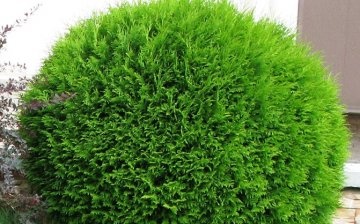

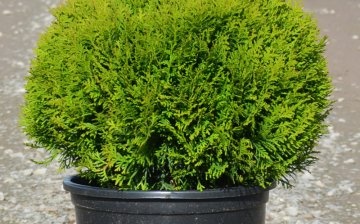
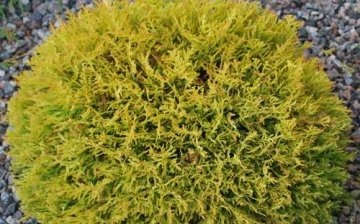
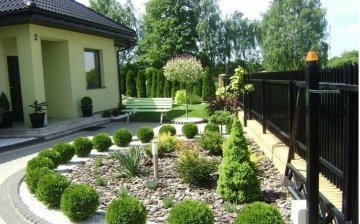





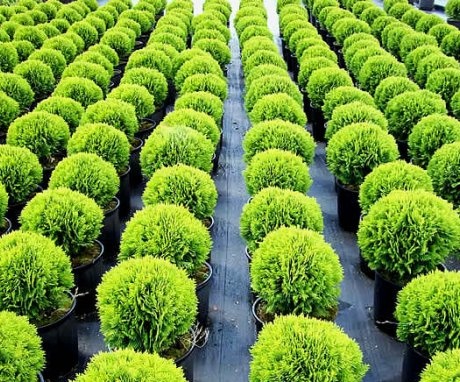
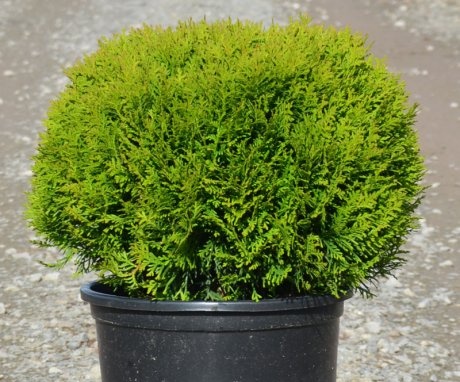
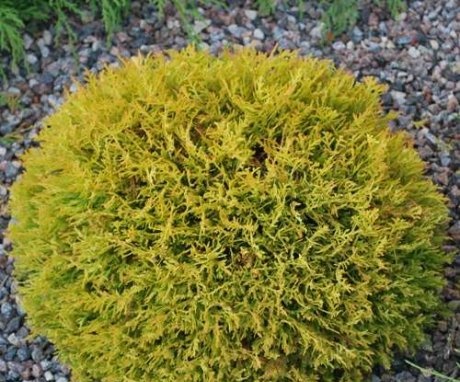
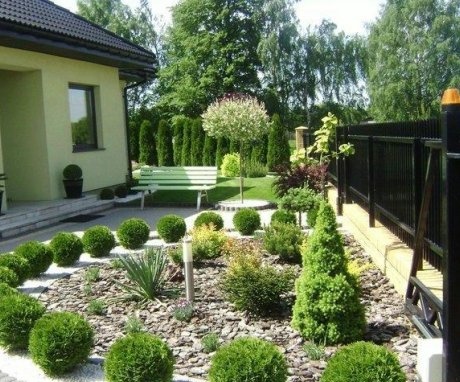
The most important thing is that it is not required to maintain the round shape of the thuja with the help of haircuts - otherwise it would be horror at all) And it's so convenient - it grows itself, just take proper care)))